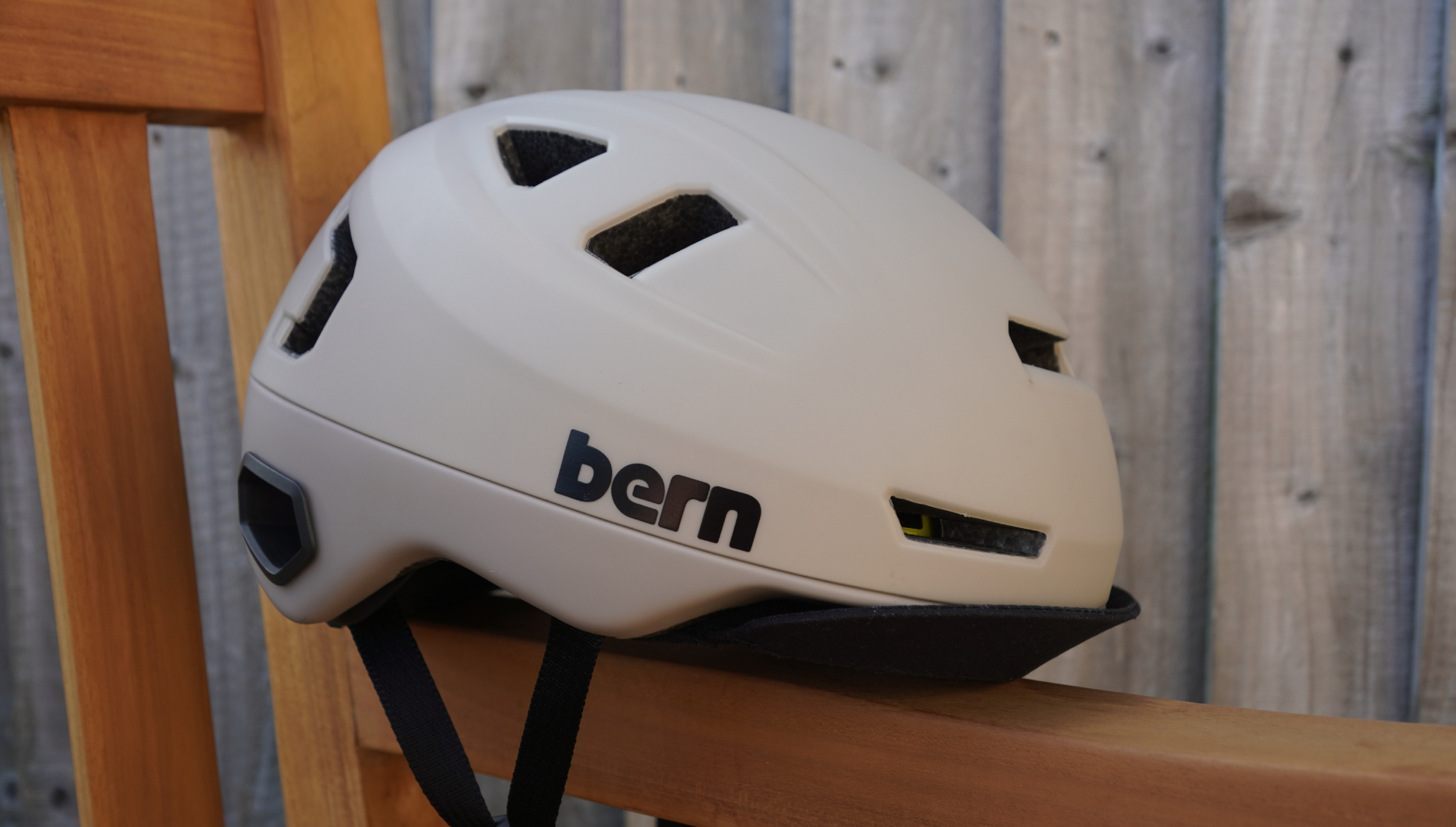
Designed with urban cyclists and commuters in mind, Bern has packed the Hudson with features including an integrated rear light and reinforced d-lock vents for added visibility and convenience while riding in the city. We look at how the highest model in Bern’’s range compares to the best commuter bike helmets for urban cycling.
Bern Hudson MIPS: construction
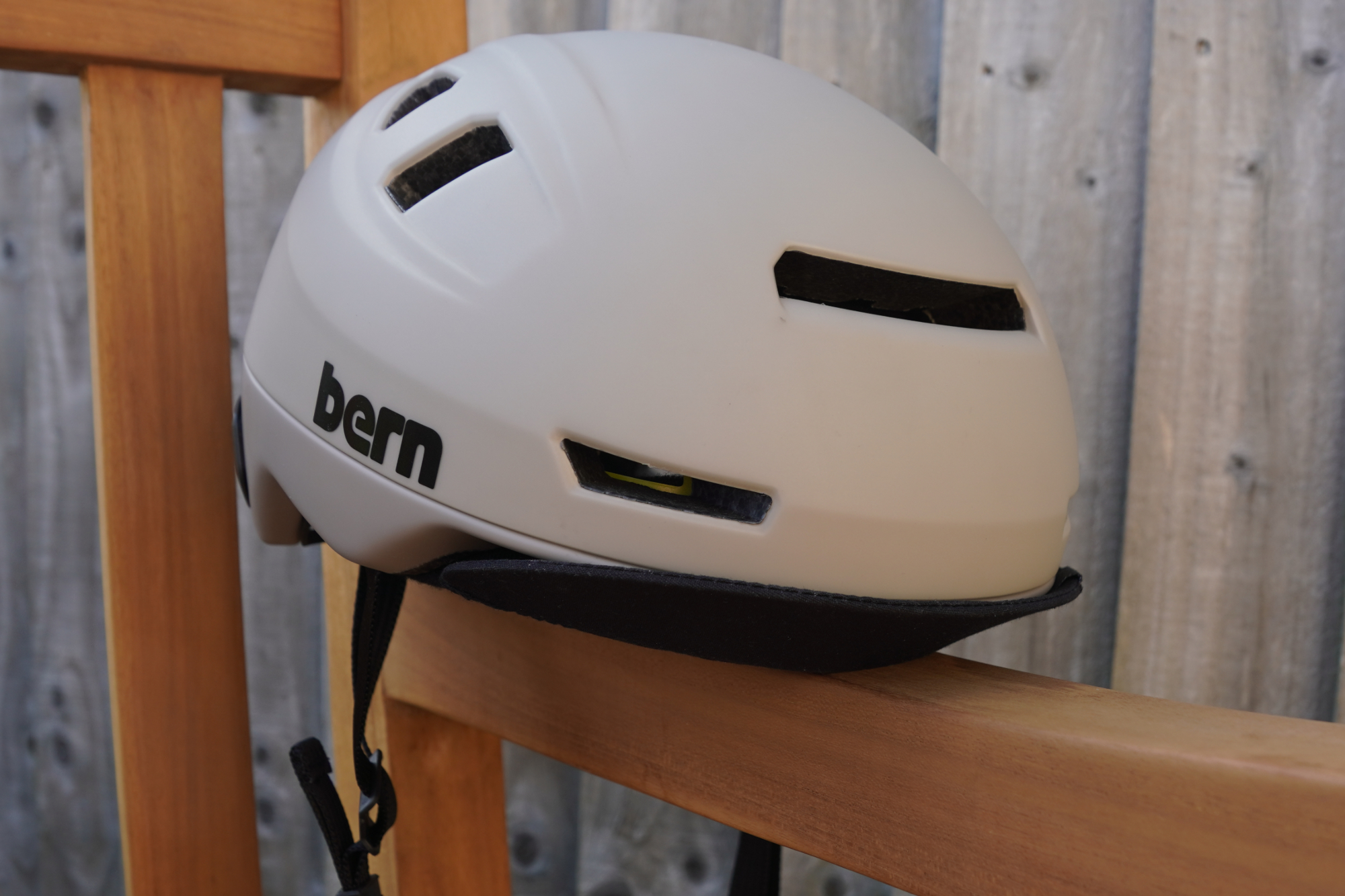
The Hudson has an in-mold construction and incorporates a low friction layer which allows the helmet to slide 10-15 millimeters in all directions - this is the yellow liner that can be seen on the inside of the helmet. It’s called MIPS technology, and it claims to reduce some of the rotational motion transferred to the brain in the unfortunate event of a crash. It’s technology that we’ve seen integrated slickly into the top-end best bike helmets, such as the Giro Aries Spherical, so it's encouraging to see the technology trickle down into lower-priced lids, including urban helmets.
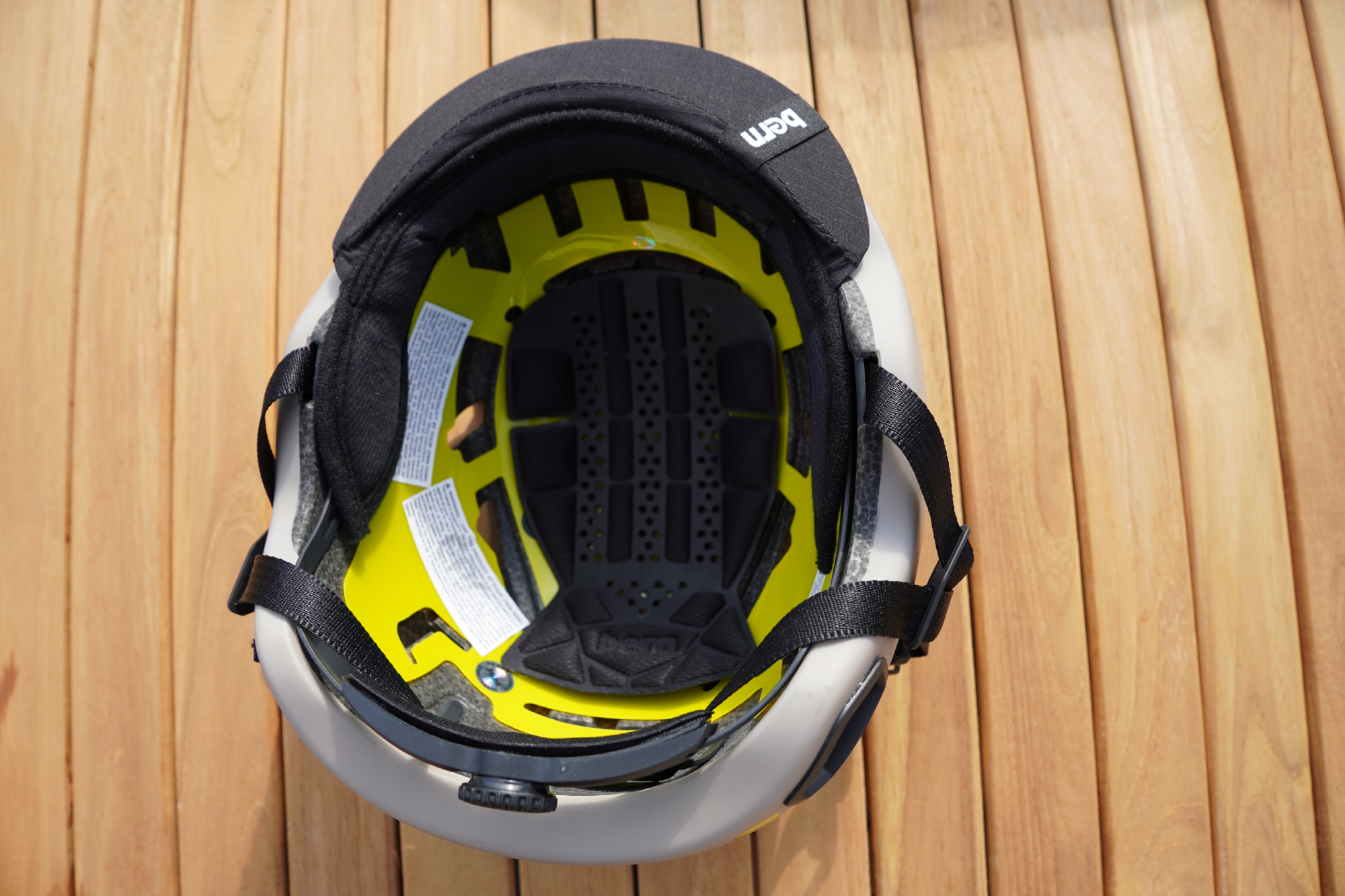
The Hudson also meets the new NTA 8776 safety standard. “This standard follows the same safety metrics but NTA 8776 differs with an increased surface area for direct impact testing and a lower allowable threshold of impact transference to account for bikes with auxiliary pedal assist (A.K.A. E-bikes) up to 45km/h,” Bern explains.
These safety credentials have been assessed by an external tester, Virginia Tech Helmet Lab. After undergoing testing the Hudson earned a 5-star safety rating, which is the highest rating possible.
Aside from its extensive attention to safety, Bern has developed several features that help make this a comfortable and convenient helmet for urban riders.
Thirteen vents in total can be found across the helmet to help with temperature regulation. Two reinforced vents at the rear of the helmet double up as holes for threading a bike lock through, so you don’t have to carry your helmet around with you when you arrive in the city.
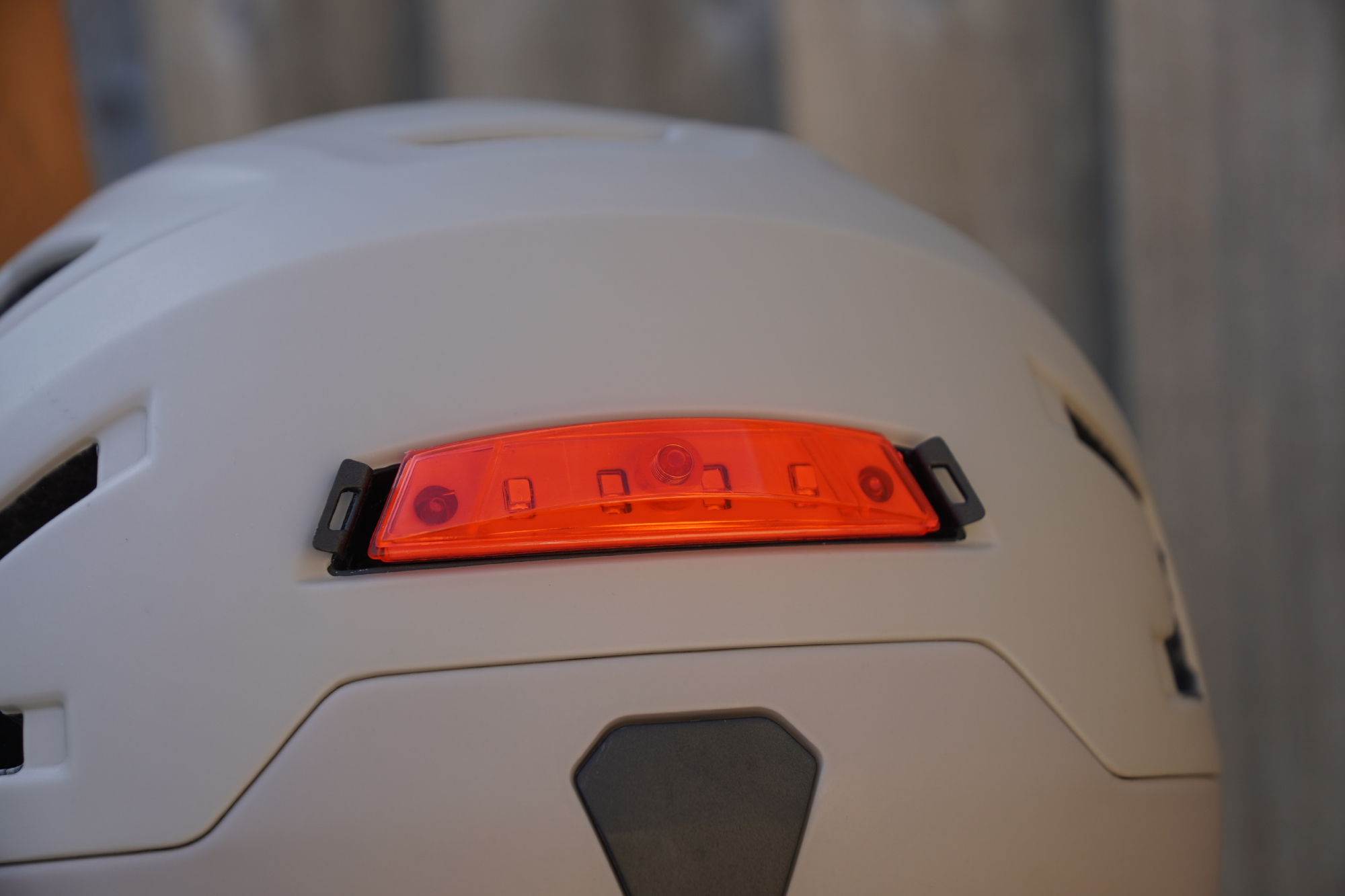
There’s an integrated LED light at the rear of the helmet, too. It’s rated to 6.6 lumens, and lasts up to 10 hours. It’s micro-USB rechargeable, and easy to click it in and out of place when it’s time to top up its battery or take it with you if you’re leaving the helmet with your bike.
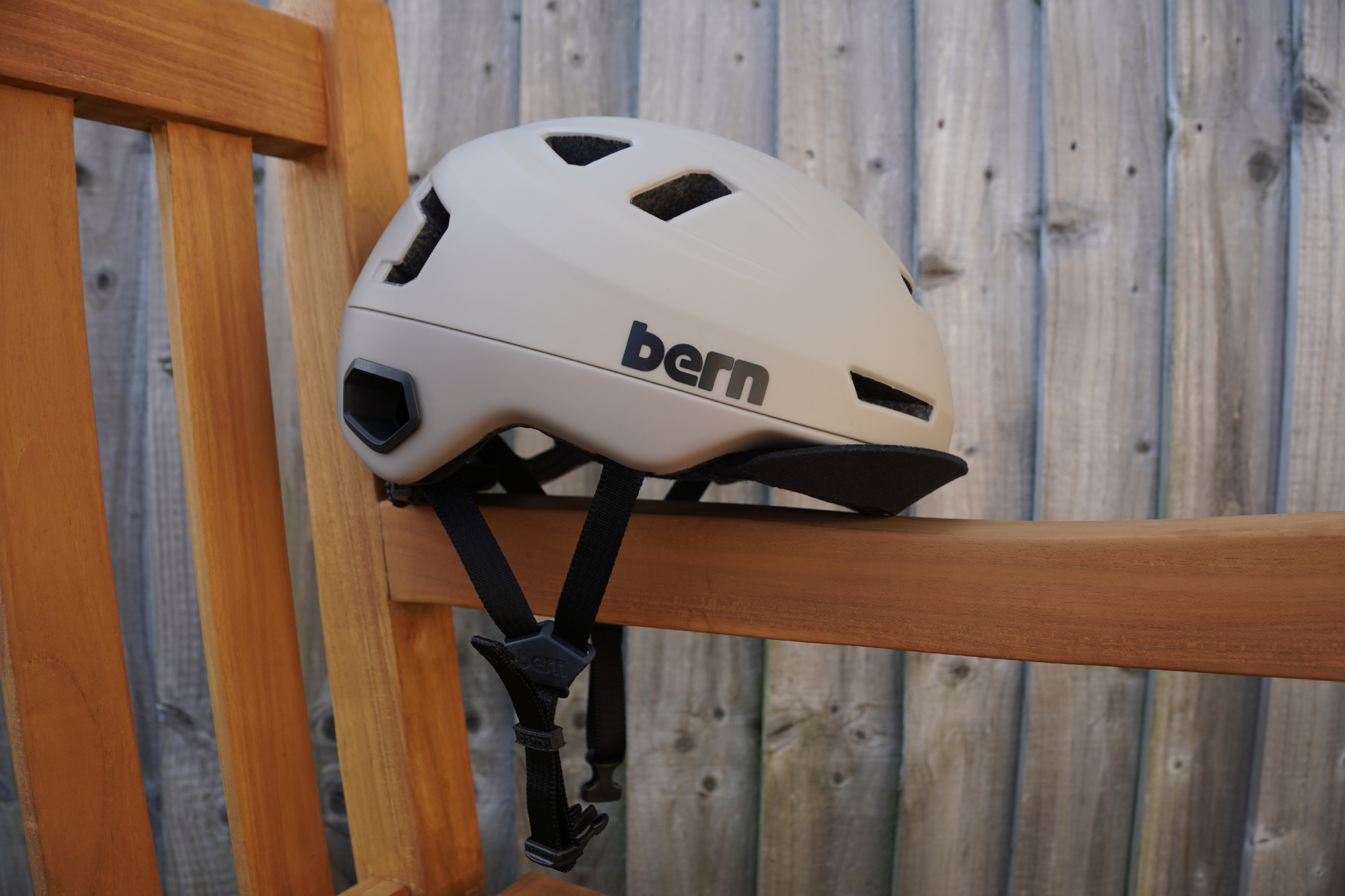
The ride
With its skater-inspired style the Hudson is noticeably deeper than endurance or race-oriented cycling helmets. And by this, I mean that it finishes much lower down at the rear of my head. As a result, I have had to adjust my ponytail so that it loosely sits further down my neck. Although it’s not my usual style, that works, and the rest of the fit is snug and secure after twisting the rear dial to what feels right.
I’ve found that the Hudson has been comfortable to wear for my hour-long commutes into Cardiff during the spring. Now that we’re getting into the summer, though, I’m starting to find that the ventilation is falling a little short of comfortable, even when cycling in at a leisurely pace.
I’ve been quite impressed by the additional features that Bern has integrated into the helmet, for extra convenience for city cyclists.
I’d usually carry a spare rear bike light in my commuter backpack in addition to the one I’ve already attached to my bike, as I think it’s important to have a back-up - especially if you know you’re going to be riding past sunset. As such, it’s been very handy to have the second one integrated into the Hudson helmet - much harder to forget!
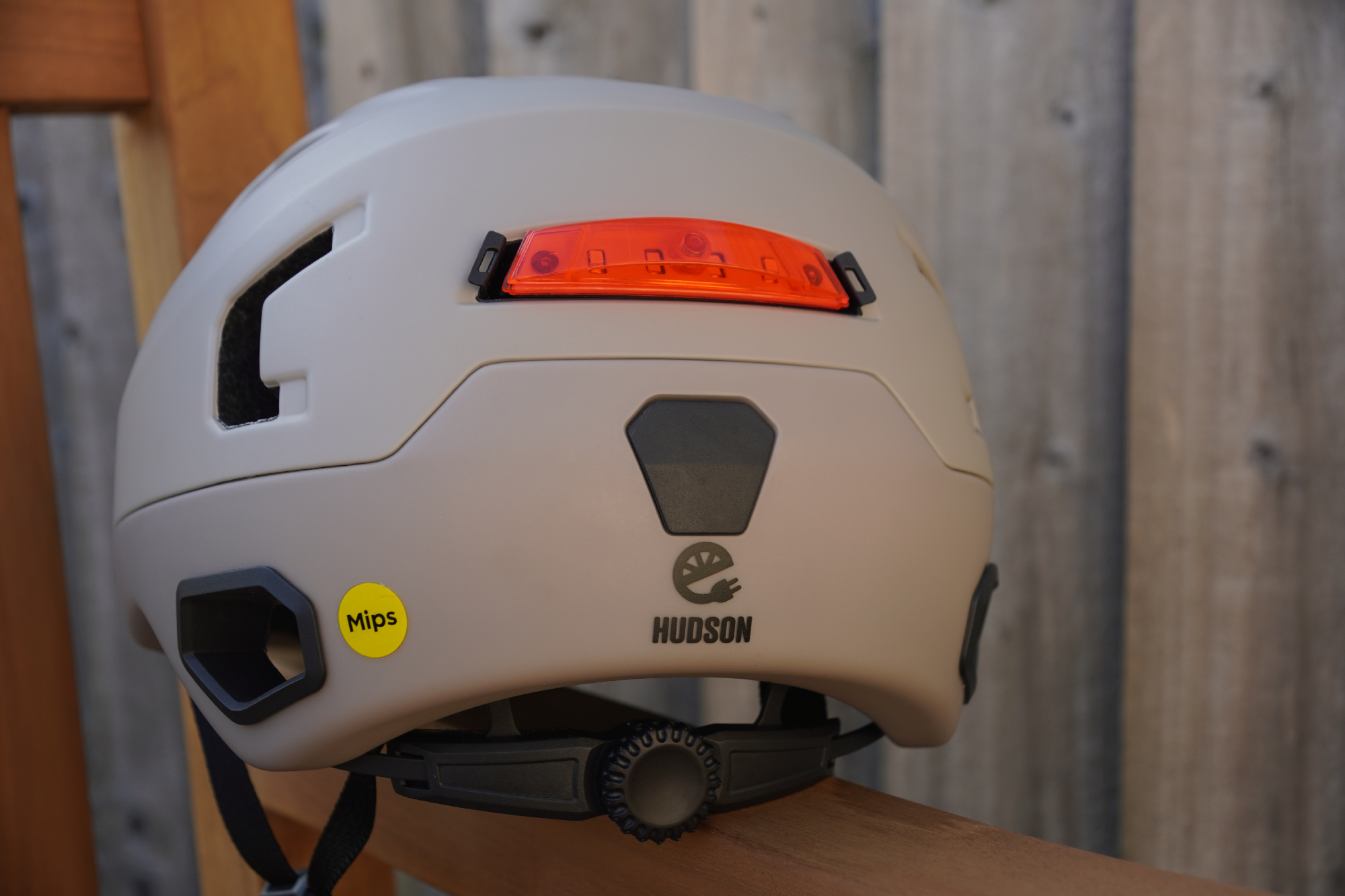
The rear light has three settings - steady, flash and pulse - which is enough variety to suit most needs. Its 6.6 lumens is a little dim, though, and I wouldn’t plan on using it as my only rear light. For context, the rear lights on Giro’s Ethos MIPS - which is also an urban helmet - is 30 lumens. In recent years there has been a recent trend towards packing in more lumens than is really necessary (some rear lights go as high as 300 lumens), and I’ve found myself never using the brightest settings. However, the integrated light on the Hudson goes a little too far in the opposite direction. A minimum of 10 lumens is my preference when it comes to rear light visibility, and the Hudson falls short here.
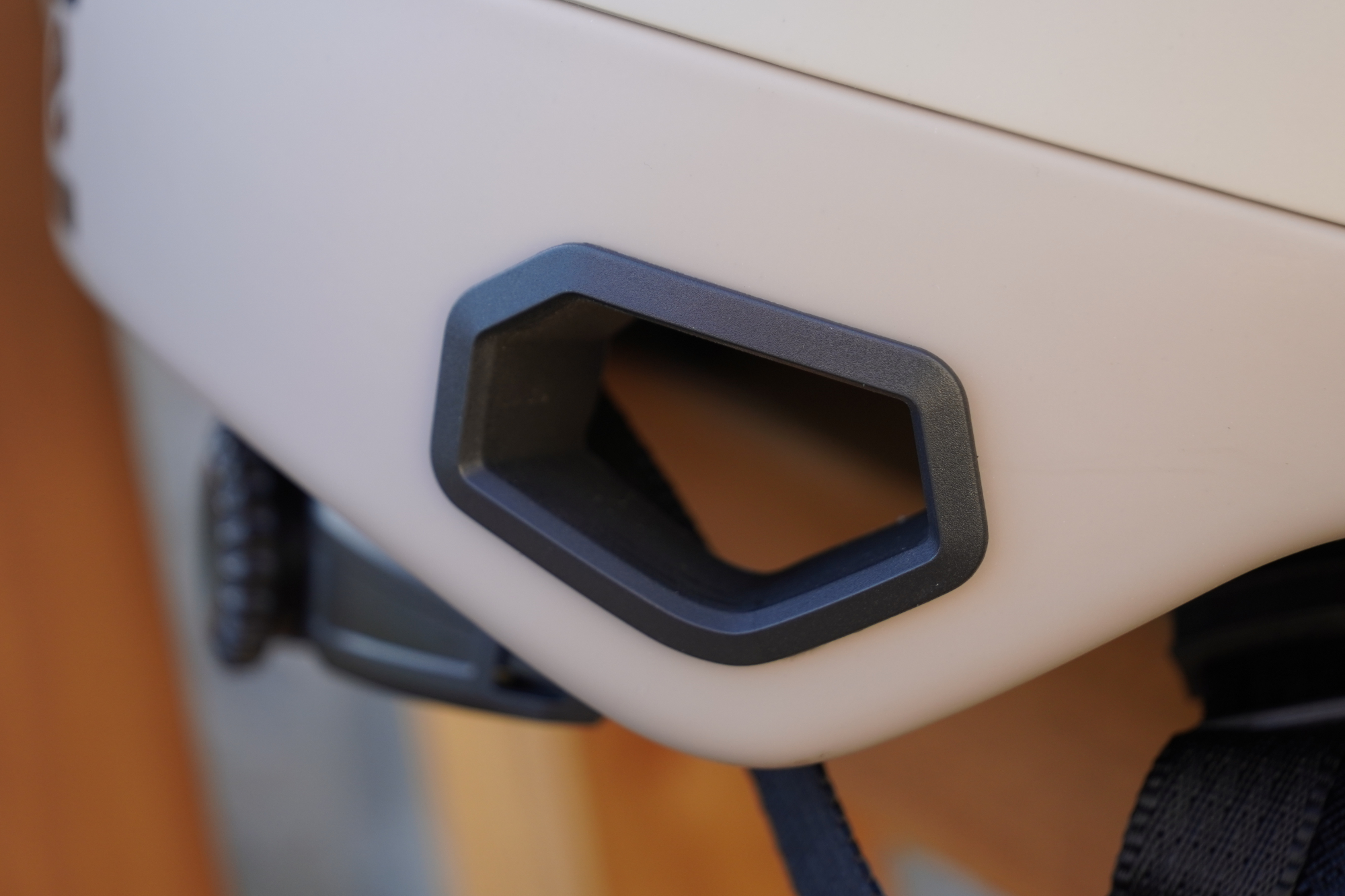
Being able to run a D-lock through the rear vents to secure the helmet to my bike has been a useful feature. Previously, I’ve simply locked my helmets through the helmet straps, but that’s not very secure. I certainly feel a lot more comfortable leaving my helmet locked to my bike through the body of the helmet. I found that it works with my Onguard Brute D-lock, which is quite a large D-lock - worth bearing in mind.
In addition to the stylish neutral Matte Sand option I’ve been wearing, the Hudson is available in a highly visible Matte Hyper Green, and classic Satin White.
Value and conclusion
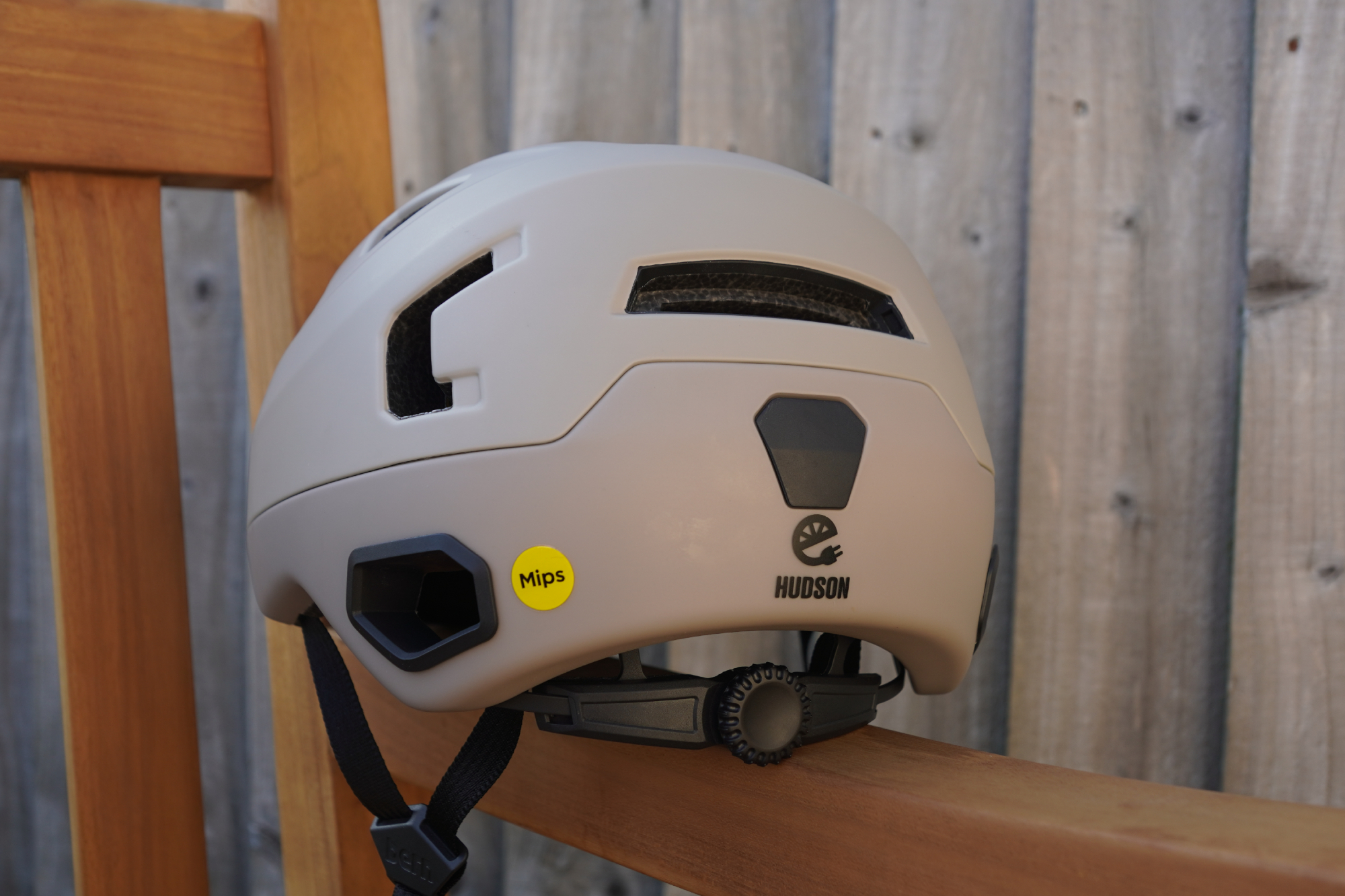
Priced at £139.95, the Bern Hudson MIPS helmet is a mid-priced option for urban riders.
Taking a look at other urban helmets with MIPS safety technology, there are much more affordable options such as Specialized’s Tone MIPS helmet which costs just £55. However, the Tone doesn’t have a system for locking up the helmet like the Bern does.
On the other hand, there are helmets that are even more feature-heavy than the Hudson, such as the Giro Ethos MIPS with its indicator lights. But Giro’s urban offering will set you back substantially more with its price tag of £249.99!
During the testing period, I’ve found that it’s useful to have a dedicated helmet for cycle commuting. As the ventilation tends not to be as good on urban helmets, for me there’s got to be something in its feature-set that makes me pick it over a low-priced road lid. Here, that’s the D-lock compatible vent and the integrated backup light.







